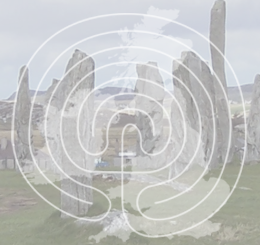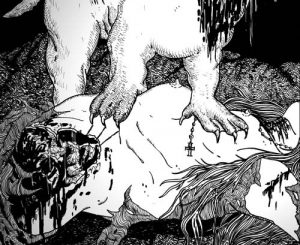St Catherine’s Church, Barmby Moor
Dating from around 1272, St Catherine’s Parish Church was largely rebuilt in 1850 replacing much of the original Norman building. In the churchyard, just south of the main door is a stone which has been speculated may have been a place of pagan worship.
 The following description is extracted from ‘County Folk-Lore Volume VI – Examples of Printed Folk-Lore Concerning The East Riding of Yorkshire (1911)’, Edited by Eliza Glutch. ‘On the south side of the churchyard lies a rude rough stone, measuring six feet in length, twenty-two inches in breadth at the wide end, and fifteen at the narrow end, and nine inches thick. After rain, water lodges in a weathered basin on its surface, which tradition says was a certain cure for warts.’ [ Wood Rees, p. 12.]
The following description is extracted from ‘County Folk-Lore Volume VI – Examples of Printed Folk-Lore Concerning The East Riding of Yorkshire (1911)’, Edited by Eliza Glutch. ‘On the south side of the churchyard lies a rude rough stone, measuring six feet in length, twenty-two inches in breadth at the wide end, and fifteen at the narrow end, and nine inches thick. After rain, water lodges in a weathered basin on its surface, which tradition says was a certain cure for warts.’ [ Wood Rees, p. 12.]
‘A History of the County of York East Riding: Volume 3, Ouse and Derwent Wapentake, and Part of Harthill Wapentake’ (1976) suggests that ‘A worn rectangular stone erected near the south door may be a medieval gravestone’




Re: St Catherine’s Church, Barmby Moor
I assume the sexton and skull were associated with St Catherine’s Parish Church but cannot be sure.
Two young men of Barmby fitted up a study and museum combined in an outer room over a watch- kitchen, and in it studied or played in peace, until on a certain night, when one of them was sitting alone, he heard footsteps slowly ascending the stairs; thinking it was a friend he called out, "Come in"; receiving no answer, he jumped up and opened the door, but no one was to be seen. This was repeated for several nights, sometimes two or even three persons heard the footsteps. The situation now began to look uncanny and mysterious; so they resolved to sit in the dark and find out if their nocturnal visitor would enter the room. Presently they once more heard the footsteps come up the stairs and pause outside the door; then (without the door opening) they distinctly heard the sound of footsteps crossing the room and pausing in front of a book-case. They quickly struck a light, but nothing could be seen. One of them then exclaimed, "The skull." A few days previously they had appropriated a skull, which the sexton had thrown up when digging a grave. They now for the first time associated the footsteps with the skull, so they "Buried it darkly at dead of night With the lantern dimly burning" in the grave whence it came. The footsteps were heard no more. — Wood Rees, pp. 69, 70.